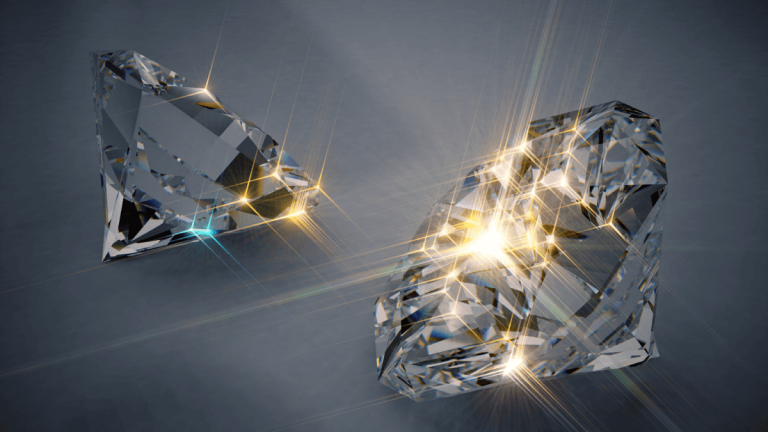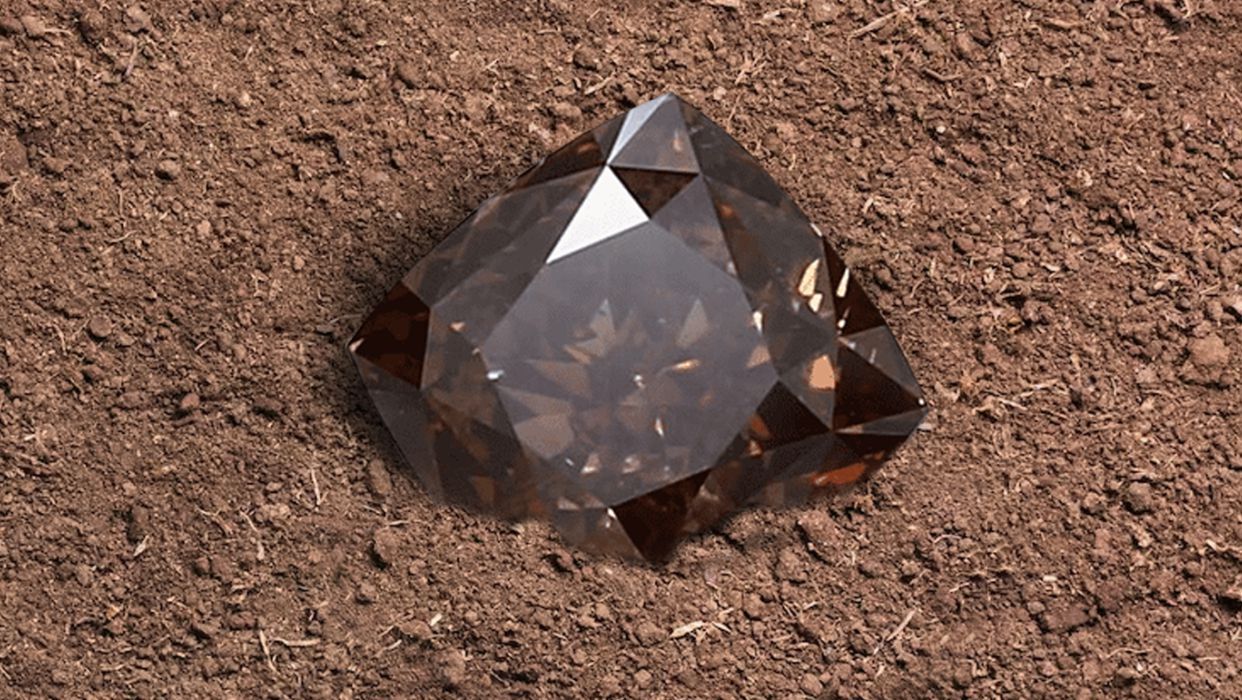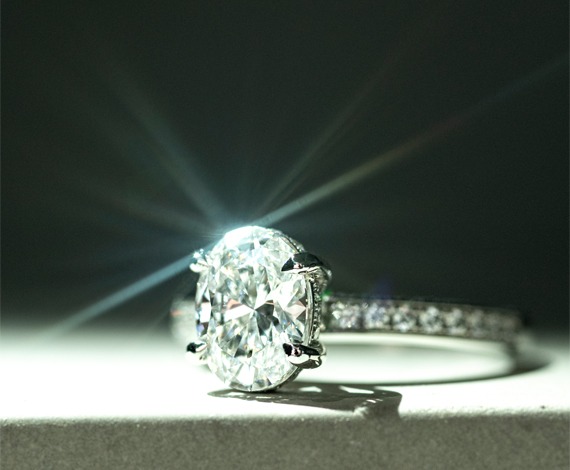
While picking a setting for your lab grown diamond ring, the metal you select can fundamentally influence the general look, toughness, and feel of the ring. Two well known choices are platinum and gold, each with its own arrangement of advantages and attributes. This guide will look at platinum vs gold lab grown diamond rings to assist you with settling on an educated choice.
Platinum vs. Gold: Key Contrasts
Toughness and Strength
Platinum
Platinum is known for its extraordinary toughness and strength. It is a thick and weighty metal, making it exceptionally impervious to scratching and discoloring. This sturdiness guarantees that a platinum ring will keep up with its cleaned appearance over the long haul, pursuing it an ideal decision for wedding bands and other day to day wear gems.
Aces: Very solid and hypoallergenic; keeps up with its sparkle with negligible support.
Cons: Greater expense because of its unique case; may foster a characteristic patina after some time, requiring incidental cleaning.
Gold
Gold, available in different tones including yellow, white, and rose, is likewise serious areas of strength for a yet not so thick as platinum. Gold’s sturdiness relies upon its immaculateness and compound organization. The most well-known gold amalgams for rings are 14K and 18K gold, which mix gold with different metals to improve strength and lessen cost.
Professionals: Adaptable in variety choices; frequently more reasonable than platinum; less inclined to discoloring.
Cons: Milder than platinum and can scratch all the more effectively; requires normal cleaning to keep up with its radiance.
Stylish Allure
Platinum
Platinum has a normally white and intelligent surface that upgrades the brightness of lab grown diamonds. Its inconspicuous sheen supplements the radiance of diamonds, settling on it a famous decision for those looking for a cutting edge and smooth look.
Professionals: Gives a contemporary, cleaned appearance; upgrades the diamond’s splendor.
Cons: Restricted to a white or silver-like completion, which probably won’t suit all style inclinations.
Gold
Gold offers a scope of varieties, each carrying an alternate stylish to a lab grown diamond ring. Yellow gold gives a work of art and warm look, while white gold has a comparable appearance to platinum however is frequently plated with rhodium for added sparkle. Rose gold adds a heartfelt and remarkable touch with its pink tone.
Experts: Assortment of varieties to match various styles; can be more customary or one of a kind for all intents and purposes.
Cons: May require rhodium plating for white gold to keep up with its sparkle; variety can blur or change after some time.
Support and Care
Platinum
Platinum requires somewhat low upkeep. It doesn’t discolor, yet it can foster a characteristic patina that certain individuals view as engaging. Customary cleaning can reestablish its unique sparkle whenever wanted.
Professionals: Low upkeep; normally opposes discoloring.
Cons: Patina improvement might require periodic expert cleaning.
Gold
Gold adornments, particularly in higher karatages, can scratch all the more effectively and may require more regular cleaning to keep up with its appearance. White gold, specifically, frequently needs rhodium plating to keep its sparkle and white tone.
Professionals: Simpler to clean with at-home techniques; reasonable upkeep.
Cons: Normal upkeep expected to forestall scratching; rhodium plating on white gold might wear off over the long haul.
Cost Contemplations
Platinum
Platinum is by and large more costly than gold because of its unique case and thickness. The greater expense mirrors the quality and sturdiness of the metal, pursuing it a superior decision for those able to put more in their gems.
Geniuses: Dependable and strong; magnificent interest concerning quality.
Cons: Higher beginning expense; may not fit all financial plans.
Gold
Gold offers a more financially savvy choice contrasted with platinum. The cost can shift contingent upon the karatage and shade of the gold, with 14K gold being more reasonable than 18K gold.
Aces: More financial plan well disposed; flexible variety choices.
Cons: Less solid than platinum; may require more incessant upkeep.
Picking the Right Metal for Your Lab Made Diamonds Ring
Individual Style
Consider your own style and how you need your lab made diamonds ring to look. In the event that you lean toward a cutting edge and downplayed look, platinum may be the most ideal decision. In the event that you are attracted to customary or one of a kind style, gold in its different varieties can offer a lovely and exemplary allure.
Way of life
Contemplate your way of life and how frequently you wear your ring. For the individuals who lean toward low-support gems and need a ring that can endure day to day wear, platinum is a fantastic choice. In the event that you’re searching for a more reasonable decision and wouldn’t fret customary upkeep, gold may be reasonable.
Financial plan
Your financial plan will assume a huge part in your choice. While platinum is a higher venture, it offers unrivaled toughness and an immortal look. Gold gives greater adaptability concerning cost and style, permitting you to pick a metal that accommodates your financial plan while as yet getting a lovely lab grown diamond ring.
Both platinum and gold are superb decisions for setting lab grown diamonds, each offering particular advantages and attributes. Platinum stands apart for its sturdiness and current appearance, while gold gives a scope of varieties and a more spending plan cordial choice. By taking into account your own style, way of life, and spending plan, you can choose the metal that best supplements your lab grown diamond ring and meets your inclinations.
Whether you pick the smooth polish of platinum or the flexible appeal of gold, a custom lab grown diamond ring will sparkle brilliantly and emblematically address your responsibility and love.

 Proposal Tips and Mistakes to Avoid for a Successful Engagement
Proposal Tips and Mistakes to Avoid for a Successful Engagement  Diamond Bracelet: A Sparkling Symbol of Elegance and Luxury
Diamond Bracelet: A Sparkling Symbol of Elegance and Luxury  Why Investment in Lab Diamonds is a Smart Choice
Why Investment in Lab Diamonds is a Smart Choice  Made Diamonds in Parramatta: The Smart and Ethical Choice
Made Diamonds in Parramatta: The Smart and Ethical Choice  Diamond Cut: Good vs. Very Good – What’s the Difference?
Diamond Cut: Good vs. Very Good – What’s the Difference?  Lab Diamonds or Mined Diamonds: Making the Right Choice
Lab Diamonds or Mined Diamonds: Making the Right Choice  Facing a DWI in Webster? Here’s What You Should Do
Facing a DWI in Webster? Here’s What You Should Do  The Rise of Lab Grown Diamonds CVD: Revolutionizing the Jewelry Industry
The Rise of Lab Grown Diamonds CVD: Revolutionizing the Jewelry Industry